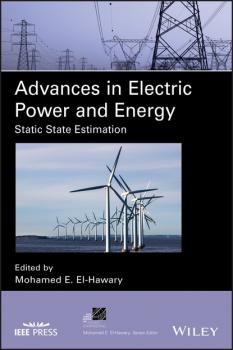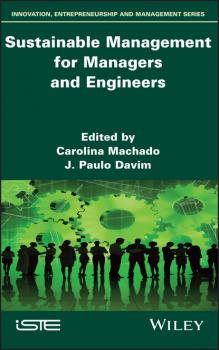John Wiley & Sons Limited
Все книги издательства John Wiley & Sons LimitedFundamentals of IoT and Wearable Technology Design
Explore this indispensable guide covering the fundamentals of IOT and wearable devices from a leading voice in the field Fundamentals of IoT and Wearable Technology Design delivers a comprehensive exploration of the foundations of the Internet of Things (IoT) and wearable technology. Throughout the textbook, the focus is on IoT and wearable technology and their applications, including mobile health, environment, home automation, and smart living. Readers will learn about the most recent developments in the design and prototyping of these devices. This interdisciplinary work combines technical concepts from electrical, mechanical, biomedical, computer, and industrial engineering, all of which are used in the design and manufacture of IoT and wearable devices. Fundamentals of IoT and Wearable Technology Design thoroughly investigates the foundational characteristics, architectural aspects, and practical considerations, while offering readers detailed and systematic design and prototyping processes of typical use cases representing IoT and wearable technology. Later chapters discuss crucial issues, including PCB design, cloud and edge topologies, privacy and health concerns, and regulatory policies. Readers will also benefit from the inclusion of: A thorough introduction to the applications of IoT and wearable technology, including biomedicine and healthcare, fitness and wellbeing, sports, home automation, and more Discussions of wearable components and technologies, including microcontrollers and microprocessors, sensors, actuators and communication modules An exploration of the characteristics and basics of the communication protocols and technologies used in IoT and wearable devices An overview of the most important security challenges, threats, attacks and vulnerabilities faced by IoT and wearable devices along with potential solutions Perfect for research and development scientists working in the wearable technology and Internet of Things spaces, Fundamentals of IoT and Wearable Technology Design will also earn a place in the libraries of undergraduate and graduate students studying wearable technology and IoT, as well as professors and practicing technologists in the area.
Maintaining Mission Critical Systems in a 24/7 Environment
The new edition of the leading single-volume resource on designing, operating, and managing mission critical infrastructure Maintaining Mission Critical Systems in a 24/7 Environment provides in-depth coverage of operating, managing, and maintaining power quality and emergency power systems in mission critical facilities. This extensively revised third edition provides invaluable insight into the mission critical environment, helping professionals and students alike understand how to sustain continuous functionality, minimize the occurrence of costly unexpected downtime, and guard against power disturbances that can damage any organization's daily operations. Bridging engineering, operations, technology, and training, this comprehensive volume covers each component of specialized systems used in mission critical infrastructures worldwide. Throughout the text, readers are provided the up-to-date information necessary to design and analyze mission critical systems, reduce risk, comply with current policies and regulations, and maintain an appropriate level of reliability based on a facility's risk tolerance. Topics include safety, fire protection, energy security, and the myriad challenges and issues facing industry engineers today. Emphasizing business resiliency, data center efficiency, cyber security, and green power technology, this important volume: Features new and updated content throughout, including new chapters on energy security and on integrating cleaner and more efficient energy into mission critical applications Defines power quality terminology and explains the causes and effects of power disturbances Provides in-depth explanations of each component of mission critical systems, including standby generators, raised access floors, automatic transfer switches, uninterruptible power supplies, and data center cooling and fuel systems Contains in-depth discussion of the evolution and future of the mission critical facilities industry Includes PowerPoint presentations with voiceovers and a digital/video library of information relevant to the mission critical industry Maintaining Mission Critical Systems in a 24/7 Environment is a must-read reference and training guide for architects, property managers, building engineers, IT professionals, data center personnel, electrical & mechanical technicians, students, and others involved with all types of mission critical equipment.
Advances in Electric Power and Energy
A guide to the role of static state estimation in the mitigation of potential system failures With contributions from a noted panel of experts on the topic, Advances in Electric Power and Energy: Static State Estimation addresses the wide-range of issues concerning static state estimation as a main energy control function and major tool for evaluating prevailing operating conditions in electric power systems worldwide. This book is an essential guide for system operators who must be fully aware of potential threats to the integrity of their own and neighboring systems. The contributors provide an overview of the topic and review common threats such as cascading black-outs to model-based anomaly detection to the operation of micro-grids and much more. The book also includes a discussion of an effective mathematical programming approach to state estimation in power systems. Advances in Electric Power and Energy reviews the most recent developments in the field and: Offers an introduction to the topic to help non-experts (and professionals) get up-to-date on static state estimation Covers the essential information needed to understand power system state estimation written by experts on the subject Discusses a mathematical programming approach Written for electric power system planners, operators, consultants, power system software developers, and academics, Advances in Electric Power and Energy is the authoritative guide to the topic with contributions from experts who review the most recent developments.
Sustainable Management for Managers and Engineers
In a competitive and complex world, where requirements from different fields are ever-growing, organizations need to be responsible for their actions in their respective markets. However, this responsibility must not be deemed one-time-only but instead should be seen as a continuous process, under which organizations ought to effectively use the different resources to allow them to meet the present and future requirements of their stakeholders. Having a significant influence on their collaborators' performance, the role developed by managers and engineers is highly relevant to the sustainability of an organization's success. Conscious of this reality, this book contributes to the exchange of experiences and perspectives on the state of research related to sustainable management. Particular focus is given to the role that needs to be developed by managers and engineers, as well as to the future direction of this field of research.
Polyurethanes
This book, cohesively written by an expert author with supreme breadth and depth of perspective on polyurethanes, provides a comprehensive overview of all aspects of the science and technology on one of the most commonly produced plastics.<br /><br /> <ul> <li>Covers the applications, manufacture, and markets for polyurethanes, and discusses analytical methods, reaction mechanisms, morphology, and synthetic routes</li> <li>Provides an up-to-date view of the current markets and trend analysis based on patent activity and updates chapters to include new research</li> <li>Includes two new chapters on PU recycling and PU hybrids, covering the opportunities and challenges in both</li> </ul>
Reference Frame Theory
Discover the history, underpinnings, and applications of one of the most important theories in electrical engineering In Reference Frame Theory , author Paul Krause delivers a comprehensive and thorough examination of his sixty years of work in reference frame theory. From the arbitrary reference frame, to the coining of the title «reference frame theory,» to the recent establishment of the basis of the theory, the author leaves no stone unturned in his examination of the foundations and niceties of this area. The book begins with an integration of Tesla's rotating magnetic field with reference frame theory before moving on to describe the link between reference frame theory and symmetrical induction machines and synchronous machines. Additional chapters explore the field orientation of brushless DC drives and induction machine drives. The author concludes with a description of many of the applications that make use of reference frame theory. The comprehensive and authoritative Reference Frame Theory also covers topics like: A brief introduction to the history of reference frame theory Discussions of Tesla's rotating magnetic field and its basis of reference frame theory Examinations of symmetrical induction and synchronous machines, including flux-linkage equations and equivalent circuits Applications of reference frame theory to neglecting stator transients, multiple reference frames, and symmetrical components Perfect for power engineers, professors, and graduate students in the area of electrical engineering, Reference Frame Theory also belongs on the bookshelves of automotive engineers and manufacturing engineers who frequently work with electric drives and power systems. This book serves as a powerful reference for anyone seeking assistance with the fundamentals or intricacies of reference frame theory.









